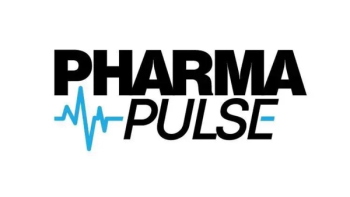
- Pharmaceutical Commerce - June 2025
- Volume 20
- Issue 3
How the Rise in Self-Injectables Is Impacting Pharmaceutical Manufacturing
As the adoption of biologics rises, demand for home healthcare grows, and conditions like diabetes and autoimmune disorders become more prevalent, self-injectables are here to stay.
Over the past few years, the self-injectable pharmaceuticals market has soared to new heights, leaving pharmaceutical companies struggling to meet demand and keep up with changing industry dynamics. According to Research and Markets,1 the global self-injection devices market is expected to reach $67.29 billion by 2035, with a compound annual growth rate of 10.33% during the forecast period of 2025-2035.
With a rise in the adoption of biologics, growing demand for home healthcare options, and an increase in conditions such as diabetes and autoimmune disorders, self-injectables are here to stay, and brands are challenged with implementing manufacturing operations that will keep them ahead of the curve.
The rise in self-injectables has brought a certain set of challenges for pharmaceutical companies to overcome. With meeting patient demand more urgent than ever, combined with supply chain disruptions that can arise promptly, companies are faced with meeting high demand while maintaining quality and regulatory standards. Additionally, the complexity of self-injectables requires manufacturers to seek new production methods and machines that create, fill, and package these devices, shaking up existing processes and flow companies are accustomed to.
However, with challenges come strong opportunities for success. Let’s explore some of the key benefits for pharmaceutical and drug manufacturers to consider when expanding into the self-injectable market.
Exploring a new business format
Historically, most patients have received drug injections from a doctor or pharmacy professional, but more recently, pharmaceutical companies have had the opportunity to interact directly with consumers. With the rise of medications like GLP-1s, consumers are showing increasing comfort with self-injectables, opening the door for consumers to bypass traditional channels and more efficiently secure the medications they need. By showing consumers the safety, ease of use, and convenience of self-injectable medications, pharmaceutical manufacturers are connecting with users directly and empowering them to take control of their health from the comfort of their own homes.
By communicating directly with consumers, pharmaceutical companies must consider the elements needed to ensure that users have all the information they need to correctly and comfortably administer self-injectable drugs. From the primary and secondary packaging to the materials and instructions included inside a package, companies must keep consumer-friendly packaging top of mind when broaching direct-to-consumer operations. Self-injectables and other medical device developments allow for exploration of new technology for dosing, and even medication tracking, adding to the complexity of production. Having a manufacturing line that can encompass the filling, packaging, and collation of products is a key element to streamlining operations, especially as drugs become more niche, and production runs become smaller and more focused.
Maintaining flexibility
Due to a rise in diseases and breakthroughs in treatments, pharmaceuticals have become increasingly tailored and complex, leading to the manufacturing of less volume in certain production runs. With an increasing variety of medications that pharma companies offer, there is also a need for increased flexibility in manufacturing operations.
By incorporating filling machines that able to easily switch from one application to another, pharmaceutical companies can boost efficiency, reduce production downtime, increase capacity, and better meet the needs of customers demanding a greater variety of products.
Flexibility of operations also comes with the specs of filling machines that are integral to pharmaceutical manufacturing. With demand for the injectable format on the rise, companies are challenged with adding lines and shifting facility layouts to accommodate appropriate machines. These machines often take up precious facility space, causing ripple effects in changes needed to be implemented for redesign.
Prioritizing safety
Two of the most important components of pharmaceutical manufacturing are patient safety and quality assurance. As drugs become more complex and regulations become more stringent, companies must constantly find ways to ensure the safety and quality of their products.
Through collaboration with original equipment manufacturers (OEMs), pharmaceutical companies can incorporate modules into their equipment—such as electronic components and sensors—to provide checkpoints and visual inspections, reject stations, and processes to pinpoint the source of potential errors. This will allow any product issues to be flagged before they make their way into the hands of patients.
Data management plays a critical role in the prioritization of patient safety. By tracking products down to the component, capturing data throughout the manufacturing process, and monitoring equipment health, pharmaceutical companies can ensure systems are running smoothly and the highest quality products will be distributed to patients safely. Today, OEMs offer a range of digital solutions that can be linked to a customer’s manufacturing execution system software in order to enhance machine monitoring, data analytics, and predictive analysis to increase overall equipment effectiveness, while delivering more efficient and reliable production performance.
Predicting the future
If the rise of self-injectable drugs has taught pharmaceutical companies only one lesson, it is that trends ebb and flow, and no one can perfectly predict where the industry will be even a few years in the future. Decades ago, pharmaceutical companies likely could have never imagined patients wanting to handle medication injections themselves. The total shift in sentiment to present-day demand emphasizes the crucial need for future-proofing machines and manufacturing processes.
Drugs of all kinds are getting smarter, resulting in growth opportunities for all types of pharmaceuticals, blending the line between pharmaceutical drugs and medical devices. The industry is evolving, and the success of drugs in new formats is paving the way for innovation across the board.
To keep up with this changing landscape, pharmaceutical companies must consider machines with flexible formats that can consistently be updated. Otherwise, they run the risk of becoming obsolete and facing a need for substantial investment in new equipment.
By having an open mind and aiming to stay ahead of the curve of changing industry dynamics, pharmaceutical manufacturers are poised to weather the challenges associated with a rise in the self-injectable format. With a willingness to stay in touch with consumer needs and finding the right OEM partner to support flexible operations, quality assurance, and futureproofing, companies can open the door to new possibilities for self-injectable drugs and beyond.
About the Author
Stephen Robinson is a sales engineer with Coesia North America.
Reference
1. Self-Injection Devices Market by Product, by Usability, by Application, by Distribution Channel, and by Region. Research and Markets. December 2024.
Articles in this issue
6 months ago
The Art of Agility6 months ago
DSCSA Compliance: The Time is Now6 months ago
Changing the PAP Model6 months ago
Raising the AlarmNewsletter
Stay ahead in the life sciences industry with Pharmaceutical Commerce, the latest news, trends, and strategies in drug distribution, commercialization, and market access.




